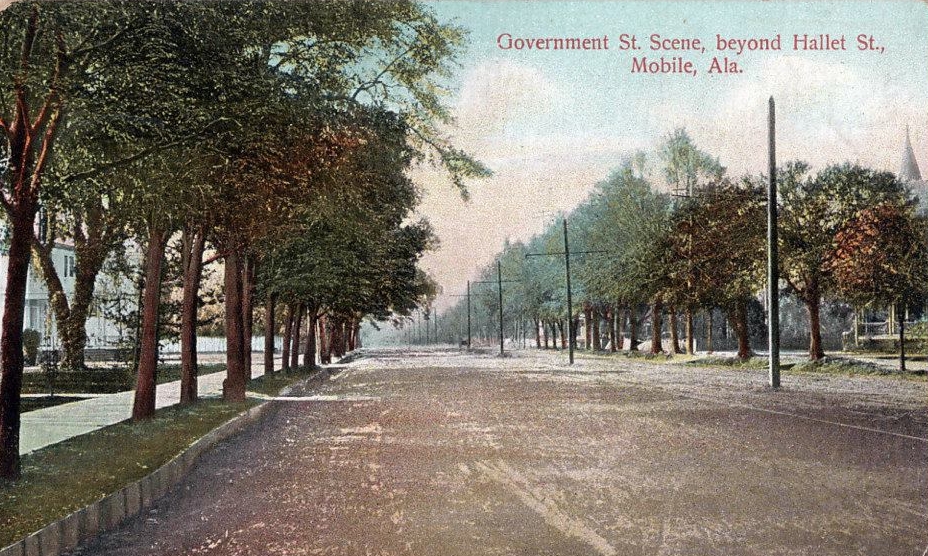Government Street
Government Street has long been considered one of Mobile's finest thoroughfares. The street is known for its arching oaks and grand mansions. Its wide expanse was once home to a streetcar that traversed to The Loop. It was Mobile's finest rendition of a boulevard and continues to hold that honor today despite the ever-increasing suburbanization of the area.
History of Government Street
Government Street was first mentioned in 1788. Its name possibly came from the "Government House," the Royal Storehouse. A portion of Government Street is incliuded in the DeLusser Tract, the only surviving French grant in the city. In American times, the Downtown portion has traditionally been a street where Mobile's government-related functions were concentrated: Barton Academy, Old City Hall, Mobile Government Plaza, the Ben May Public Library, Mobile Bar Association, and Social Security Administration.
As Mobile grew, there was a great demand for lots in the old French city. Fort Condé, which took up the whole southern part of the old town, had to be kept up as long as Florida east of the Perdido (River) remained in Spanish hands. In 1819 the United States bought Florida from Spain. Soon afterwards, Bienville's beautiful brick fort was blown up with gun powder, and the earth from its outer works was dumped into the marsh at Royal Street. With the destruction of Fort Condé, Mobile began to take on the appearance it has today. The street was made 100 feet wide and ran from the old esplanade along the high ground to the west, thus ensuring the westward development of the city. This street soon became the most significant east-west thoroughfare through the city. Through the years the city's most fashionable residences were built along Government Street, and Mobilians moved here from the Church Street District and De Tonti Square. The street eventually gained the reputation as the "millionaire's row," although many of the largest and grandest of the 19th-century mansions once lining the street were demolished as late as the 1980s. The area east of Houston Street still has many 19th- to early 20th-century mansions that date back to the time when Government was the most prestigious address that one could have in Mobile.
Source: Delaney, Caldwell, "The Story of Mobile"; Midtown Mobile Movement, www.midtownmobile.org
SOURCE: OCTOBER, 1981 MOBILE PRESS REGISTER




